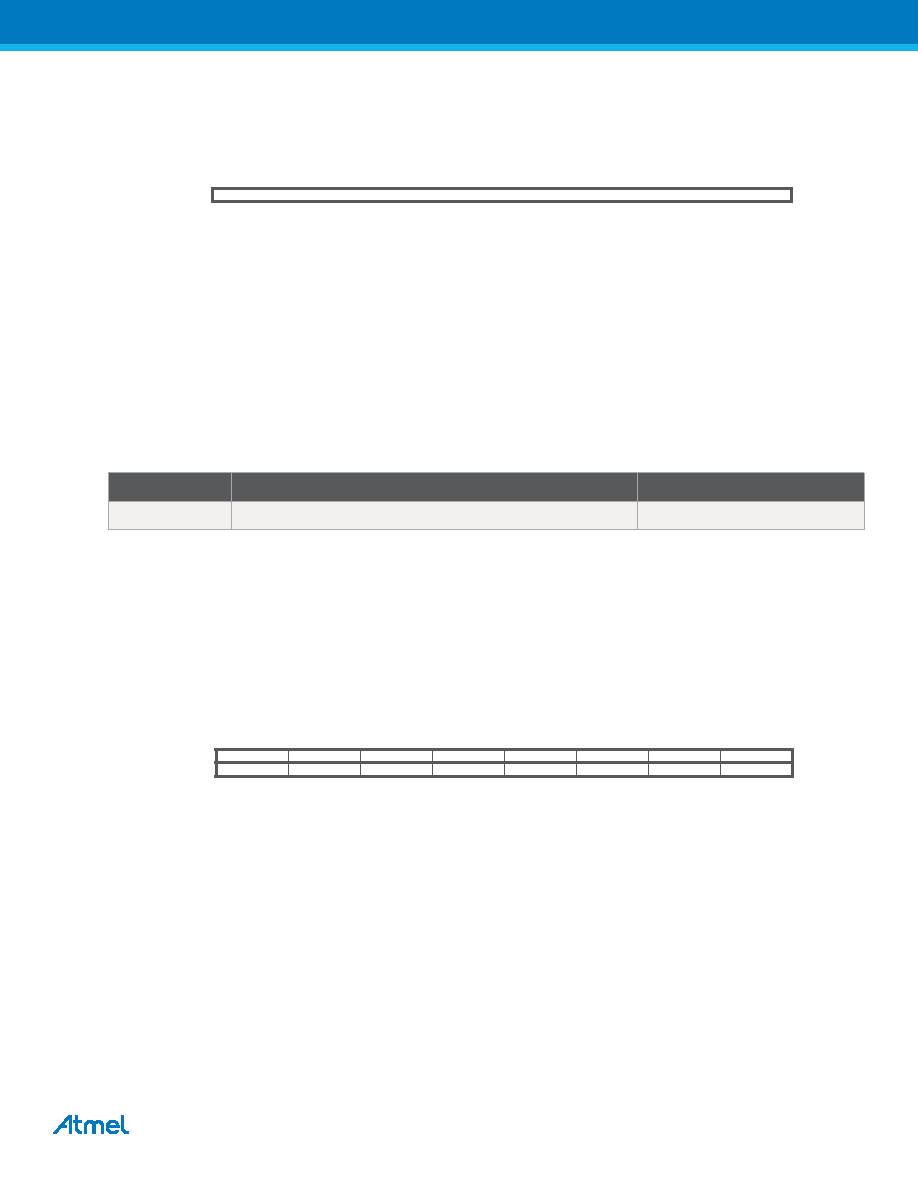- 您現(xiàn)在的位置:買(mǎi)賣(mài)IC網(wǎng) > PDF目錄25633 > MQ80C52TXXX-12SB (TEMIC SEMICONDUCTORS) 8-BIT, MROM, 12 MHz, MICROCONTROLLER, CQFP44 PDF資料下載
參數(shù)資料
| 型號(hào): | MQ80C52TXXX-12SB |
| 廠商: | TEMIC SEMICONDUCTORS |
| 元件分類(lèi): | 微控制器/微處理器 |
| 英文描述: | 8-BIT, MROM, 12 MHz, MICROCONTROLLER, CQFP44 |
| 文件頁(yè)數(shù): | 6/46頁(yè) |
| 文件大小: | 4720K |
| 代理商: | MQ80C52TXXX-12SB |
第1頁(yè)第2頁(yè)第3頁(yè)第4頁(yè)第5頁(yè)當(dāng)前第6頁(yè)第7頁(yè)第8頁(yè)第9頁(yè)第10頁(yè)第11頁(yè)第12頁(yè)第13頁(yè)第14頁(yè)第15頁(yè)第16頁(yè)第17頁(yè)第18頁(yè)第19頁(yè)第20頁(yè)第21頁(yè)第22頁(yè)第23頁(yè)第24頁(yè)第25頁(yè)第26頁(yè)第27頁(yè)第28頁(yè)第29頁(yè)第30頁(yè)第31頁(yè)第32頁(yè)第33頁(yè)第34頁(yè)第35頁(yè)第36頁(yè)第37頁(yè)第38頁(yè)第39頁(yè)第40頁(yè)第41頁(yè)第42頁(yè)第43頁(yè)第44頁(yè)第45頁(yè)第46頁(yè)

13
ATtiny20 [DATASHEET]
8235E–AVR–03/2013
4.8
Register Description
4.8.1
CCP – Configuration Change Protection Register
Bits 7:0 – CCP[7:0]: Configuration Change Protection
In order to change the contents of a protected I/O register the CCP register must first be written with the correct
signature. After CCP is written the protected I/O registers may be written to during the next four CPU instruction cycles.
All interrupts are ignored during these cycles. After these cycles interrupts are automatically handled again by the CPU,
and any pending interrupts will be executed according to their priority.
When the protected I/O register signature is written, CCP0 will read as one as long as the protected feature is enabled,
while CCP[7:1] will always read as zero.
Table 4-1 shows the signatures that are recognised.
Table 4-1.
Signatures Recognised by the Configuration Change Protection Register
Notes: 1. Only WDE and WDP[3:0] bits are protected in WDTCSR.
2. Only BODS bit is protected in MCUCR.
4.8.2
SPH and SPL — Stack Pointer Registers
Bits 7:0 – SP[7:0]: Stack Pointer
The Stack Pointer register points to the top of the stack, which is implemented growing from higher memory locations to
lower memory locations. Hence, a stack PUSH command decreases the stack pointer.
The stack space in the data SRAM must be defined by the program before any subroutine calls are executed or
interrupts are enabled.
In ATtiny20, the SPH register has not been implemented.
Bit
76543210
CCP[7:0]
CCP
Read/Write
WWWWWWW
R/W
Initial Value
00000000
Signature
Group
Description
0xD8
IOREG: CLKMSR, CLKPSR, WDTCSR(1), MCUCR(2)
Protected I/O register
Initial Value
00000000
Read/Write
R
RRRRR
Bit
15
14
13
12
11
10
9
8
––––––––
SPH
SP7
SP6
SP5
SP4
SP3
SP2
SP1
SP0
SPL
Bit
76543210
Read/Write
R/W
Initial Value
RAMEND
相關(guān)PDF資料 |
PDF描述 |
|---|---|
| MC80C52CXXX-16 | 8-BIT, MROM, 16 MHz, MICROCONTROLLER, CDIP40 |
| MR80C52EXXX-25/883 | 8-BIT, MROM, 25 MHz, MICROCONTROLLER, CQCC44 |
| MQ83C154XXX-12/883R | 8-BIT, MROM, 12 MHz, MICROCONTROLLER, CQFP44 |
| MC80C52CXXX-16P883 | 8-BIT, MROM, 16 MHz, MICROCONTROLLER, CDIP40 |
| MC80C32-12SBD | 8-BIT, 12 MHz, MICROCONTROLLER, CDIP40 |
相關(guān)代理商/技術(shù)參數(shù) |
參數(shù)描述 |
|---|---|
| MQ82370-20 | 制造商:Rochester Electronics LLC 功能描述:- Bulk |
| MQ8238020 | 制造商:Intel 功能描述:CONTROLLER: OTHER |
| MQ82380-20 | 制造商:Rochester Electronics LLC 功能描述:- Bulk |
| MQ82380-20/R | 制造商:Rochester Electronics LLC 功能描述: |
| MQ82592 | 制造商:Rochester Electronics LLC 功能描述:- Bulk |
發(fā)布緊急采購(gòu),3分鐘左右您將得到回復(fù)。